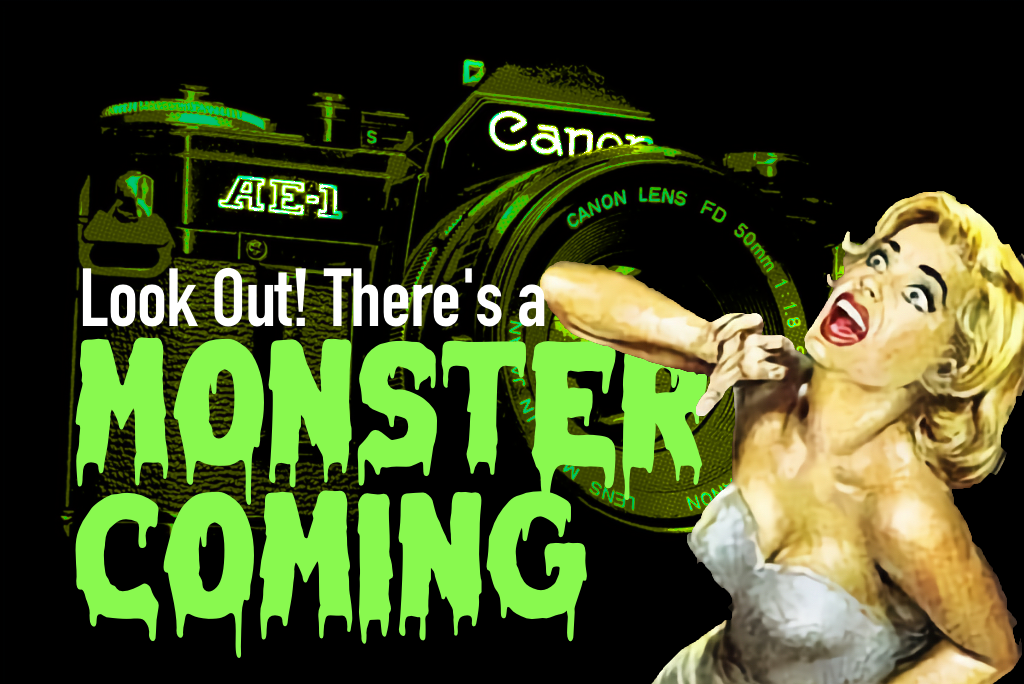
This Canon AE-1 review was originally titled ‘Why I Hate the Canon AE-1’ – But I decided against it. There are so many reasons I actually do hate the AE-1 it would be hard to know where to start or finish and it might have ended up like one of those horror TV shows that goes on for hours as people list the 500 greatest things of a thing ever, interspersed with paid for reminisces by people who never had anything to do with any of it, but gurn on about how it was ‘inspirational’ and ‘changed their lives’.
There are reasons I hate the Canon AE-1, its bland, soulless, made of plastic, has horrible ergonomics and it would be easy to simply slag it off, but I felt I should be more magisterial, above pettiness and personal prejudice and balanced.
I also considered as a title ‘C-C-C-Canon and the Terminal Cough’ but thought it would be too obscure. Of course the Canon devotees would have been quick to point out how unfair that was given the cameras age and the problems of old cameras in general and, in truth, it would have seemed cruel – rather like laughing at someone with dementia who is now mowing the lawn with a vacuum cleaner. Understandable but no less cruel.
All things considered and wanting to be fair I elected for ‘Look Out! Theres a Monster Coming’ after listening to a Bonzo Dog Album. The Bonzos help me maintain a sense of the surreal and bizarre which is sometimes needed when working on a camera.
So why the title then? Well the Canon AE-1 was most definitely a monster. A monster seller for sure being the first 35mm SLR to sell more than a million units backed by a monster marketing campaign which was got the AE-1 sold faster than anyone at Canon ever dared dream. But it was a monster in other ways too. It heralded the end of really high quality cameras and a shift to plastic. I have written in previous articles about the last of the quality cameras like the Pentax MX and the Minolta XD7. Now it’s time for a monster sized read looking at the scary monster that helped bring about their demise.

Going back…
Back in the 1970s the name of the game for the camera industry was to get more 35mm SLRs sold. It should be remembered that for the aficionado of film the 35mm SLR was where it was at, but in fact SLRs only accounted for a tiny portion of the camera market. The bulk of the market was point and shoots.
The problem with the point and shoot market for the manufacturers was they were cheap and that it was hard to sell accessories. Not even a flashgun as most of the point and shoots had an integrated flash so not much money to be made.
The advantage of the SLR for the manufacturers was once you got the customer to buy an SLR you could then sell them a flashgun, a bevy of lenses, maybe a motor drive. This all translates to money in the bank. Of course the manufacturers phrased it differently. ‘Give us your money’ isn’t ever going to be a sound marketing catchphrase outside of an armed robbery so the pitch to the punter would be they could be more creative, shoot like a pro, get amazing pictures and all for the cost of a few weeks wages.
The big headache though was getting people away from their snap-o-matic type Kodaks and this had two problems. Number one was getting the camera to do some of the work to make life simpler and number two was getting the price low enough to make it attractive. Remember in the 1970s with no mobile phones to take a picture for you if you wanted a snap shot of a graduation, a wedding or a family holiday it was film or nothing. However most people lacked any real interest in learning photography, they just wanted some pictures of family events. The point and shoot cameras of the 1970s did everything for you. All you had to do was a press a button and wind on. So the challenge to getting more 35mm SLRs sold was get the price right and keep it simple.
Canon had, until the AE-1, been something of a back number. The professionals all went for Nikon who had skilfully marketed themselves as the professionals choice or, after 1974, Olympus – the brash upstart now wowing pros with their dinky sized OM-1 and huge pile of lenses and accessories. Olympus had been able to wow some of the pros with their lightweight fully pro set-up by moving the goalposts to smaller size and lower weight.
Pentax of course had been the favourite of the well heeled but not terribly serious snapper since the start of the 35mm SLR revolution. That left Canon and Minolta fighting like two drunks locked out of the bar at closing time. By the mid 1970s both Canon and Minolta had very tired looking offerings that looked very dated. Minolta had the SRT which harked back to the 1960s and Canon had the FTb which, while newer, looked almost as old. Both the SRT and the FTb are fine cameras but in the market space of the mid 1970s they looked like dinosaurs. Solidly constructed, reliable but heavy and bulky and, critically, requiring someone with at least some basic nous to get good pictures with them – serious semi-pros and the enthusiastic only and definitely not the average mum and dad market! Those semi-pros and serious amateurs were not a big enough market for anyone and certainly not if you wanted to be king of the heap.
Worse, with the recessions of the early 1970s people had been squeezed financially and the camera market had taken a hit. After all there are only so many people who want to buy an expensive luxury like a camera and the market for 35mm SLRs was showing shrinkage. What was needed was a bump in tech and/or price to get things moving again.
Minolta would go off on a mind bender and develop technical marvels like the XD7 but Canon wanted a bigger piece of pie and they clearly had a plan to get it. Years of making fine cameras had not bought them success – this time they would do it different.
Canon AE-1 Review : Enter the AE-1 – Monster Sales
Canon probably realised eventually they couldn’t hope to compete with either Nikons prestige, the elan of Olympus or the pre-existing base of Pentax. Canons pro-offerings while amazing just couldn’t make headway against Nikons near monopoly position and the Pentax owners were likely to hold on to their darling Spotmatics until they faded to black.
So, Canon set out with boldness to create a new audience by bagging off the point and shoot users and the fence sitters by enticing them into dark side of 35mm SLR ownership. Muah ha ha!
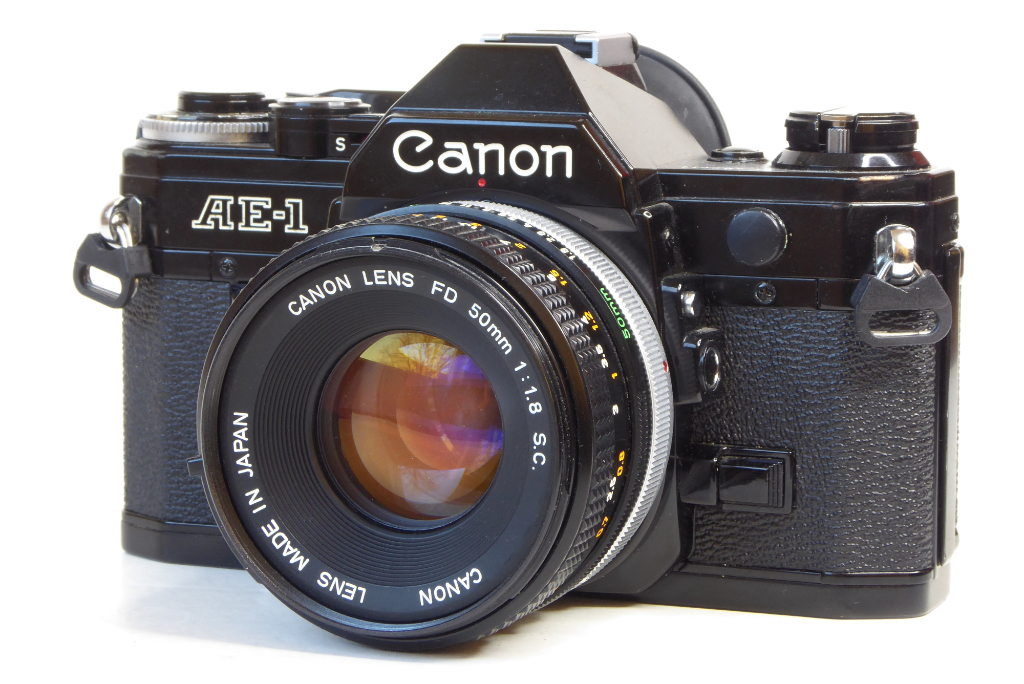
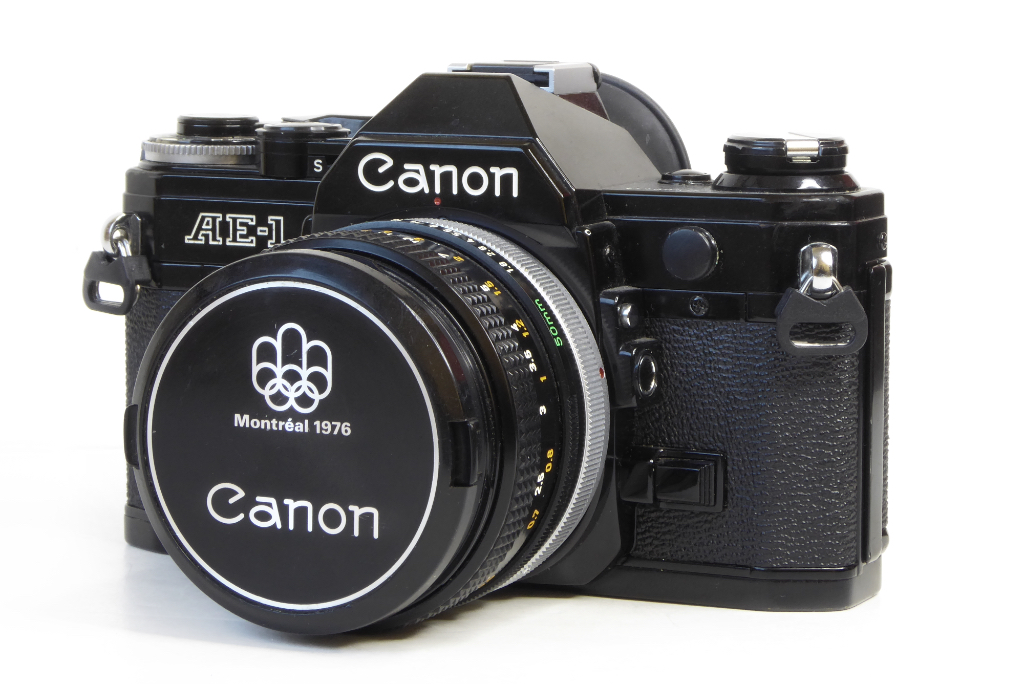
Launched in 1976 and promoted heavily through the Montreal Olympics the AE-1 would be the product to make all this happen. A 35mm SLR which would be mostly made of plastic and electronics to keep the price down and lure the novice with promises of amazing pictures plus they would look like a pro with an AE-1 draped round their neck.
The plastic body would save time milling out blocks of metal and the electronics would speed assembly. A typical mechanical 35mm SLR has around 1,000 pieces of precision parts inside. An electronic one cuts that in half or more. Less parts, fewer sub contractors, fewer assembly steps and automation of the production line becomes possible. All of this feeds into lower price for the end user. That’s goal number 1 nailed down. Now what about making it easy?
The AE-1 would introduce automation in the camera itself by providing automatic selection of the aperture. All the user had to do was select a shutter speed and focus and the camera would do the rest by automatically selecting an appropriate aperture. Now automatic modes on cameras were nothing new but they were expensive but the AE-1 changed all of that and coupled with the lowest possible price and a huge marketing push it was enough to turn the AE-1 into a monster. Want to shoot like a pro but cant be bothered to learn anything ? It’s ok the Canon AE-1 will do all the hard work for you was the essence of Canons pitch.
With a Canon AE-1 in your hands you too could shoot amazing pictures without ever bothering to learn anything.
Canon AE-1 Review : Monster sized marketing
Canon, allegedly, spent as much on marketing the camera as they had in designing and making it. The camera officially launched at the 1976 Montreal Olympics and Canon had a bevy of sporting personalities all lined up to extol the virtues of the automation and sing in chorus about how easy it was to use. An endless stream of sporting personalities from tennis, golf, figure skating and rally driving lined up to start telling people on mainstream TV and media just how easy it was to use. All the hype pushed the AE-1 to record sales numbers in a very short space of time. They even roped in a few professional shooters to give it a ringing endorsement and a professional seal of approval.
Now a seasoned shooter might well wonder at the expertise of a golfer, a tennis player or a figure skater to make pronouncements about a camera but it most definitely worked as a marketing pitch.
I was always dubious about the sample pics from camera manufacturers and doubly so from the Canon AE-1 adverts. They showed a sophistication which I doubt was captured by an AE-1 and if they were being taken with an AE-1 it was being handled by an amazingly skilled photographer.

The marketing and sales pitch is even evident in the instruction manuals. Canon pitched the AE-1 very hard indeed and each AE-1 came with the traditional very comprehensive manual that all camera suppliers provided back then but the AE-1 also came with a ‘Jack and Jill’ type instruction leaflet for the rank beginner.
Laudable really and this could be used by retail outlets to demonstrate how simple it all was and help steer people into the world of 35mm SLR cameras enabling Canon to potentially sell them a whole array of accessories not to mention the boost in sales volumes from the camera itself.
The whole thing was beautifully packaged for a novice with simple ‘how to’ instructions to guide the beginner in the unknown regions and dark art of 35mm photography with an SLR.
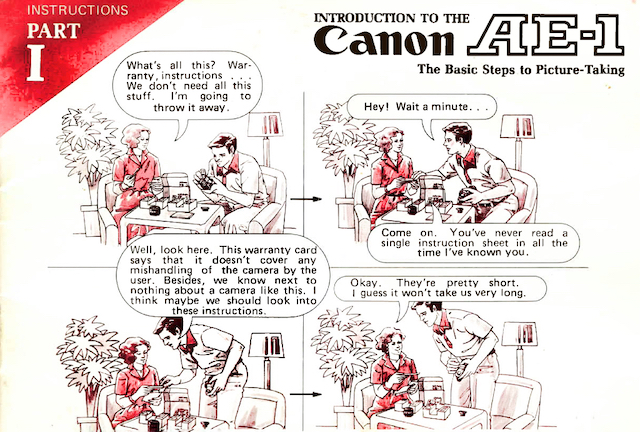
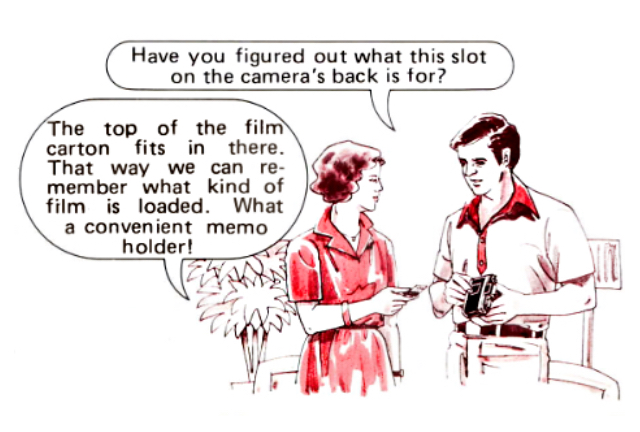
Canon AE-1 Review : Monster cut backs on quality
The AE-1 pretty much undercut everyone on the market. The price was very appealing and, of course, on launch it looked quite glitzy. A 35mm SLR camera with automatic mode normally the preserve of the top end of the market at a price that wouldn’t break the bank for too many people. But as ever it came at a price.
Prior to the AE-1, Japanese cameras had majored on amazing quality, all metal and precision engineering. The Canon AE-1 would put an end to that and Canon geared the AE-1 for low price – good enough would be the new watchword.
To be fair plenty of them are still running and over time it’s probably fared no worse than many similar cameras from its period. I’ll get into problems with this particular bit of 1970s kit a bit later.
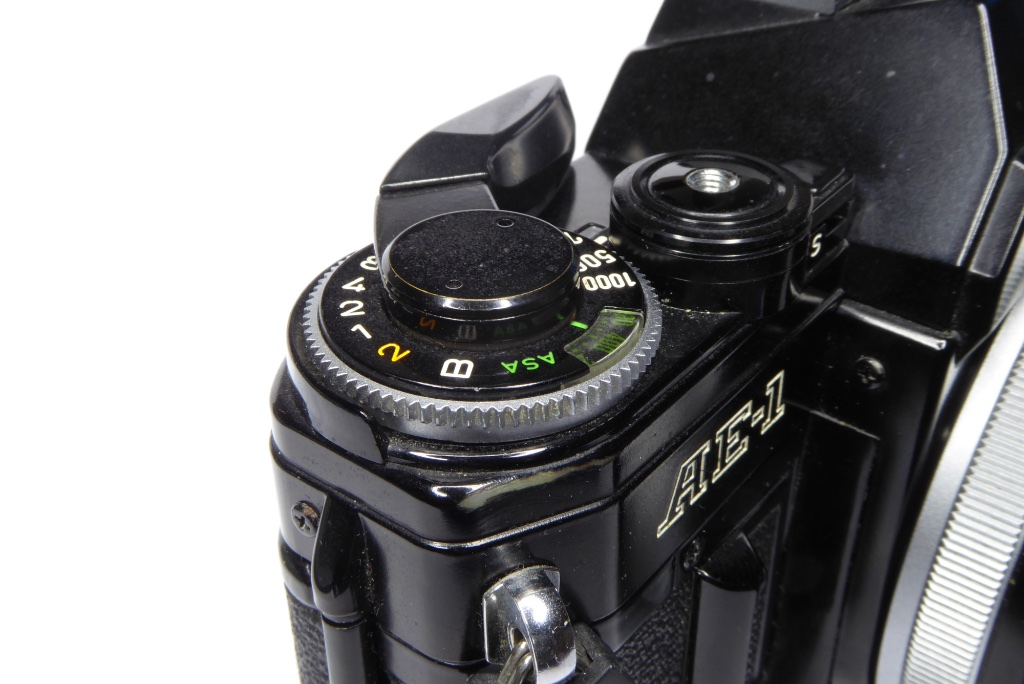
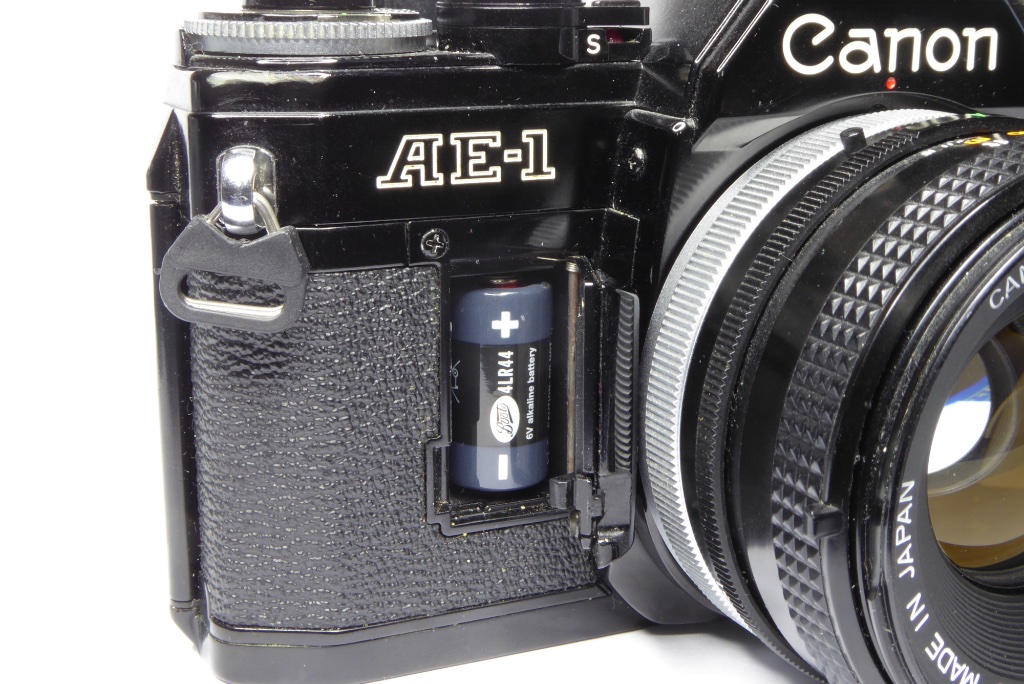
Underneath the feel of metal the AE-1 was plastic through and through. Canon disguised this by developing a brass plating that would bond to the plastic top cover. It feels like metal to the touch because of this and, for a black one, a natural brassing look as the paint wears. When it wears down a bit further you will find white plastic. The base plate of the camera actually is metal but its very, very thin.
The guts of an AE-1 are almost entirely plastic, internal levers and gears that were traditionally made of metal are all replaced with plastic parts as far as possible. Gone are the metal roller bearings and fittings and even the film advance lever is plastic.
Canon also adopted a very modular internal construction to cut down on assembly work. Many cameras of the period are assembled like fine timepieces. The Canon AE-1 is assembled more like a consumer piece of electronics. This all sped production and kept the costs down and profits up.
Canon AE-1 Review : Looking at the Monster
The AE-1 is fairly traditional in its overall looks, its a tad bland but looks about the same as most mid market cameras of its period.
To make use of the shutter priority exposure the FD lenses designed to work with it and its predecessor the FTb all have a small press stud you press down to set the lens at its minimum aperture which is the ‘A’ position. Some of the older FD series use an ‘o’ instead to indicate this as they were geared for the FTb which lacks auto mode.
The top deck is quite clean looking with the film speed and shutter speed dial located under the film advance lever. On looks alone it’s quite a pleasing camera to look at but it does hide some problems. Being mostly made of plastic the film advance has known issues where the plastic studs underneath can shear off and cause the advance mechanism to jam. Theres no way of knowing what Canons quality position was. Typically Nikon and Olympus built their cameras for pro use and to withstand around 50,000 – 100,000 shutter actuations. Canon may well have cut this back a fair bit correctly assessing the average point and shoot user would only use at most two rolls of film a year. If the camera survived five years it would probably be good enough from Canons viewpoint.
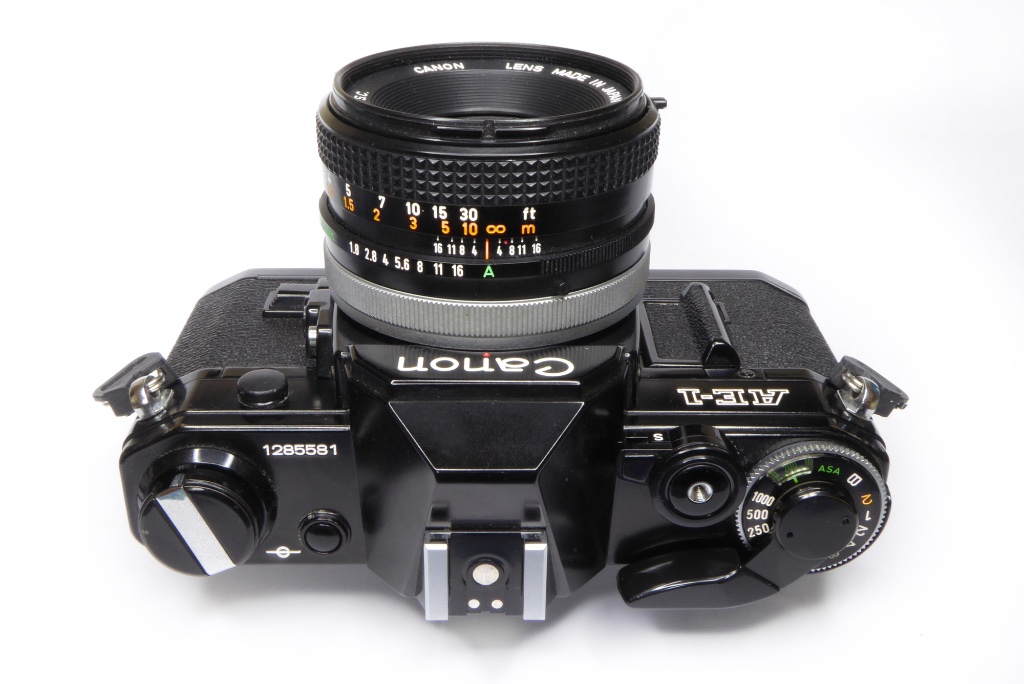
The Canon logo is in the old style script which gives the camera a vintage/traditional look and probably explains at least some of its appeal to younger users who are often very much into the retro look. The AE-1 does look the part at first glance especially in its optional black finish.
The camera is powered by a 4LR44 battery which is basically four conventional LR44 types bonded together and this is located on the front behind a fairly flimsy battery door. The catch to open this is a bit tricky and Canon supplied a hot shoe cover that had a small tab on it that could release the battery door. I have been looking for one of these forever but suspect most have been lost or users have snapped the tab off by now. Being mostly plastic the battery door is another weak spot on the AE-1 and broken doors are quite common.
The AE-1, like its predecessor the FT series, used a unique lens fitting called a breech lock. Instead of pressing a release button on the camera and rotating the lens like a conventional bayonet mount the FL and FD series lenses have a rotating ring around their base. You rotate the ring on the lens to release the lens from the camera. It’s locked in position by tension only. The idea behind this is that lens changes don’t constantly grind against the camera mount ring and potentially cause problems with focus over time but, It’s far less convenient and tricky to manage a lens change in a hurry. Lens swaps are also aggravated by the difficulty in getting a rear lens cap back on which has to be aligned with the lens and then the lens breech lock has to be screwed down to lock the cap in place. It doesn’t sound so bad until you try to manage it standing up at an event.
Later FD lenses reverted to a more traditional bayonet fitting while retaining compatibility with the FD fitting. Sadly these New FD (nFD) types are almost all plastic and many nFD types are impossible to repair due to Canon using a lot of glue and pressed plastic rivets in their construction.
The AE-1 viewfinder gives around 93% coverage which is quite average (an OM-1 sets the high bar on this and gives about 97%). The viewfinder is nice and bright and has a fine ground matte screen with a split image centre and a micro focusing ring. Metering and battery check functions are performed by a single needle in the viewfinder with a mask that shows the cameras choice of apertures.
The nicest thing with the AE-1 by far is its electronic shutter release which is amazingly soft to trigger while retaining a good feel. It also happens to sound lovely when it shoots – it has a very distinctive sound. Some people hate it and I have seen it described a sounding like a screen door being closed onto a wet fish. Allegedly the shutter sound was sampled and used on the iPhone for the iPhones camera – there you are. People often can’t get good pics with the level of an iPhone’s automation and they couldn’t with the AE-1’s back in the day.
Theres no exposure compensation as such on the AE-1 but a small silver stud on the side of the lens mount will give a 1.5 stop over exposures to compensate for backlit situations. Just below the silver stud is a button that will activate the meter and give you a meter reading which seems a bit pointless as half pressing the shutter will do the same.
The AE-1 was never geared to use a motor drive but Canon did bring out an auto-winder for it. A motor drive did eventually arrive with the updated AE-1 Program which is compatible with the AE-1. Personally I’d be nervous of using a motor drive on a vintage camera that uses plastic gears. Motor drives are brutal on a cameras winding mechanism and doubly so when the gears are plastic. The Auto-Winder adds a lot of bulk and when loaded with batteries makes the AE-1 a heavy old brick to carry around. Like the AE-1 itself plastic abounds and the battery door for the autowinder is notoriously fragile.
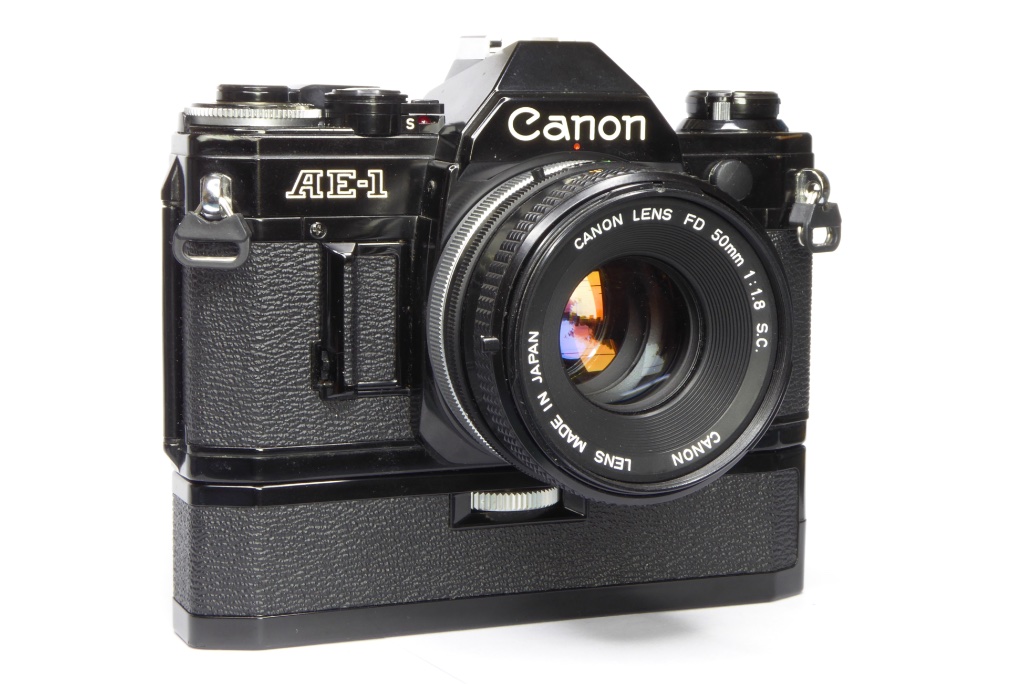
When using the camera the idea is you set the shutter speed you need, set the lens to ‘A’ and the camera will now manage the aperture for you. It seems an awkward way of running things and positively weird given the AE-1’s intended audience of rank beginners. Most people would favour depth of field – Seeing everything in focus rather than having precise control of shutter speeds which only affect things in motion – I can’t bring myself to believe that little Timmy in the paddling pool or fluffy the poodle would be moving quick enough to require speed to be the primary hold up on getting a picture. It’s hard to understand why Canon chose shutter priority, especially as its a lot harder to do than aperture priority. Possibly the AE-1 was a kind of test bed for other products or maybe Canon felt the rank beginner would understand the effect of speed more easily than aperture and depth of field.
Shutter priority on a camera with a maximum shutter speed of 1/1000th makes very little sense. Heres why…
At shutter speeds above 125th some action is stopped (certainly little Timmy in his paddling pool and fluffy the poodle), at 250th pretty much everything is stopped and by 500th anything but the fastest moving objects will appear as stationary. 1000th will stop stuff like fast moving cars but for some very fast moving objects (tennis balls and golf balls for instance) you may need to go faster. Sports photographers tend to favour very fast shutter speeds.
So, for someone with a bent for photographing fast moving sports the AE-1 would fall a bit short on the shutter speed options and, frankly no professional sports photographer was likely to buy the AE-1 anyway.
So what about the rest of us?
Well lets assume you are loaded with ASA200 film and you have perfect sunlight conditions and a 50mm lens, your exposure options will be limited to the following: –
- At 1000th you will be shooting at an aperture of f5.6
- At 500th you will be using f8
- At 250th you will be at f11/f16
- At 125th you will be at +f22 and out of the range of some lenses.
You can see that your choices of speed and aperture are pretty much restricted to three possible options. Even the lowest speed you can use will stop the average level of action that the AE-1 audience was likely to shoot. And this is under ideal bright sunlight. On less ideal conditions you will be operating with potentially only two possible exposure solutions – corrected for backlight you may be down to a single solution.
You can also see that a very shallow depth of field is out of the question under these conditions.
Now given that the only advantage of shutter priority is fast action events like airshows, racing cars, ice hockey and the like you can see that you will pretty much be restricted to a single shutter speed of 1000th which really makes any idea of shutter priority pointless. The camera simply runs out of headroom for exposure options.
I always found it strange that given the AE-1 has a very limited capability of shooting fast action sports that Canon chose sporting celebrities to promote it and even more so that apart from golf most of the sports folk were involved in stuff where you really do need fast speeds and expensive lenses way out of the price range of the intended user.
But that’s marketing – it’s never much to do with sense and everything to do with emotion.
Why didn’t Canon go the whole hog and have full Program mode? Simple – the electronics of the day were not up to it, at least not at a price that the potential users of the AE-1 would pay. Canon did eventually get program mode on the very much more expensive A1 a year after the AE-1 was released but the A1 was very much a premium amateur/semi-pro camera. In 1981 the AE-1 would be replaced by the AE-1 program which had a full program mode at a similar price and of course Minolta would launch the X-700 to go head to head with the AE-1 Program. While Minoltas X-700 would be a huge success for Minolta it never overtook the AE-1 which set a record of 6 million units sold in 5 years.
Canon AE-1 Review : Resurrecting a Monster – Buying an AE-1 Today
By far one of the most common issues with the AE-1 today is the famous Canon cough. This shows itself when the mirror stutters on mirror up and/or is slow to react. The cause is dried lubricants deep inside the cameras guts. There are numerous web videos showing how to squirt oil inside to resolve this – it’s a stupid thing to do. The camera really needs a complete CLA (clean, lubricate and adjust). Squirting oil in a camera blindly will almost always result in a quick fix now and an expensive repair bill later. People who specialise in Canon repairs have legendary horror stories of how much damage and how much extra work is required after well-meaning attempts by users to solve the ‘cough’. The AE-1 never suffered this in its heyday obviously as the lubricants were fresh. A well used one will have kept its lubricants moving about but many AE-1s were seldom used by their owners when new leading to the problems today. This is a common issue with many old cameras. BNIB (Brand New in Box) usually just means the camera will need servicing because lubricants will have dried out so don’t spend over the odds on a BNIB one – its no guarantee it’s a runner and will likely require a service.
As with any old camera you need to make sure it’s a 100% but its an even bigger risk with the AE-1 due to its heavy plastic use and the fact it’s using aged electronics. Jobs which would be simple on a mechanical camera are way beyond the skill set of most people with an AE-1.
The other issue afflicting the AE-1 is the battery door. Replacing this can be a bit of a nightmare as you need to get the top cover off the camera off. Like a Minolta SRT you have to preset the shutter speed to ‘B’ and the film speed to ASA 3200 otherwise the complex teflon cord inside which manages the metering will unwind and it will be no fun resetting it correctly.
That leads on to problem number three which is the teflon cord failing. It’s rare but it does happen and if thats happened to your camera you really need a pro to sort it out.
As already mentioned the large amount of plastic can cause issues. A common fault is part of the shutter speed/ASA dial underneath the rings can shear off. There are two small plastic tabs that can be broken. Once gone the film advance will jam up. With no spares easily available its another job for a pro.
Finally the electronics, while generally reliable, are now ageing. You are dealing with a camera thats 40 years old. The electronics are 1970s era and prone to failure like any electronics heavy camera of its period.
The other issues are common to most camera of the same age as the AE-1 which include things like shutter capping due to dried out lubrication on its shutter bearings and rollers. It’s always best to budget in a service when buying a used camera thats this old.
Canon AE-1 Review : Shooting the Monster
So – whats it like to work with? I bought an AE-1 around 1979. I was deeply sceptical of an all electronic camera but I felt scepticism should rest on solid ground and experience rather than prejudice. Back then I owned a pair of OM-1s but I bagged a shot for a local paper which got me some unexpected cash and decided to buy myself an AE-1 and see what the fuss was about. So I bought myself a black AE-1 with auto winder and a few lenses and started shooting.
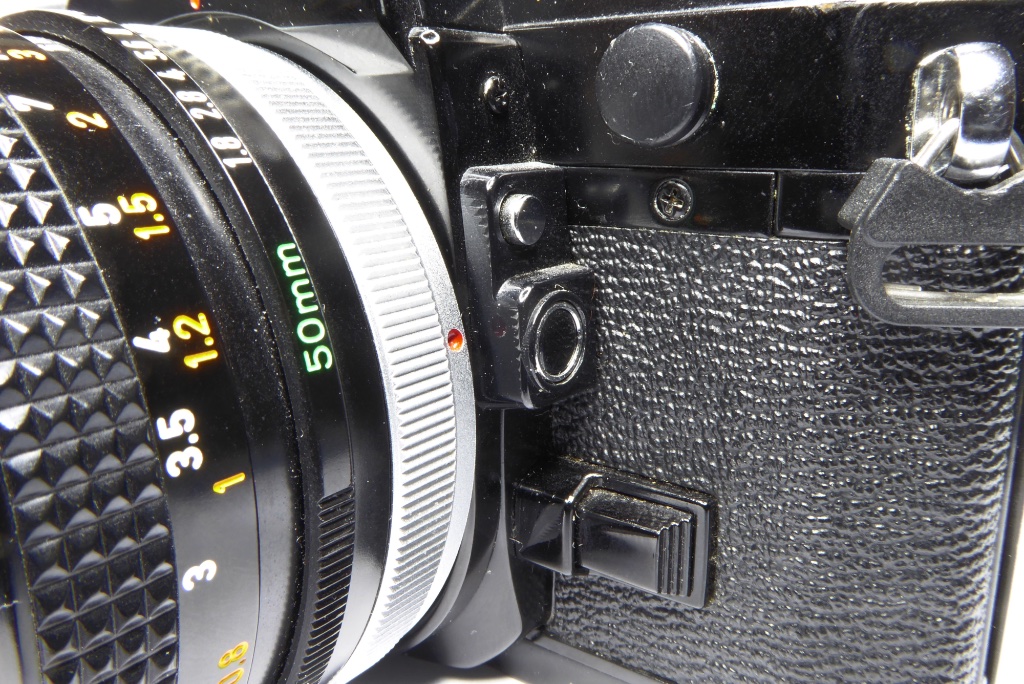
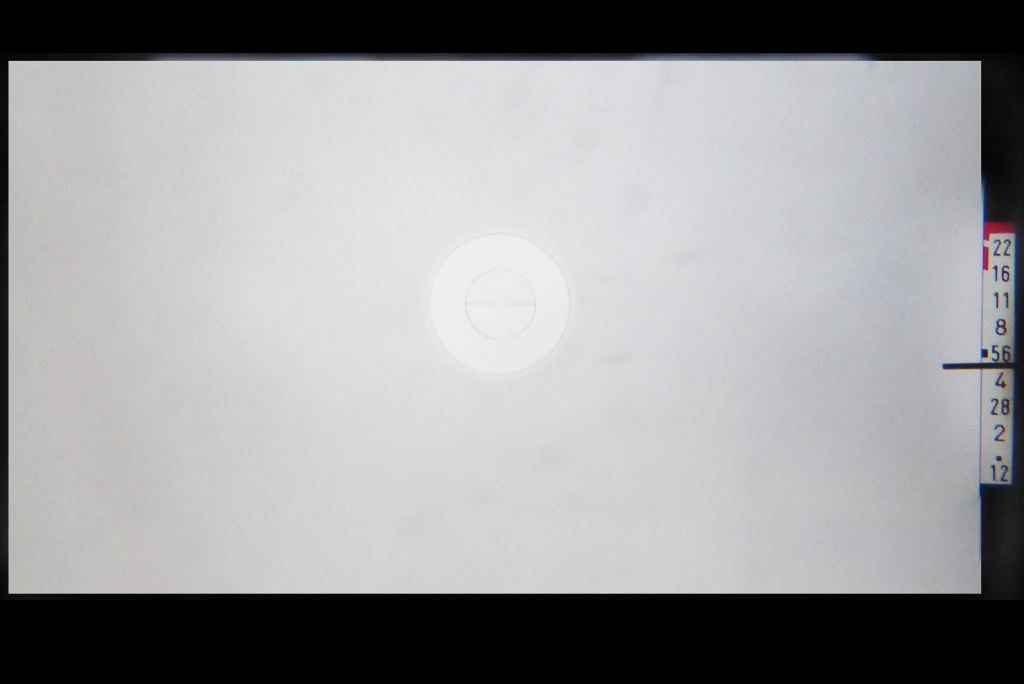
I have to say almost from the off I just hated it. It just lacked any sort of quality feel. All that plastic translated into a cheap and nasty feel far removed from either my OM-1s or even a pair of humble Fujicas I owned at the time. Used as I was to gear from Pentax and Olympus it felt cheap and nasty. Even my old Zenith B was made of metal and felt nicer!
The film advance felt brittle, the stop down lever arrangement was horrible and the overall ergonomics made it feel like someone in the finance department at Canon had been allowed far too much say in its layout.
The only thing I liked was the very smooth shutter release which had none of the mechanical bind that even the best mechanical camera has. Its very smooth to trip the shutter with just the right amount of tactile feedback.
Over the course of around a year using the AE-1 it got used less and less. I found it awkward in manual mode where the viewfinder meter display does not give you a read out as such but only advises on the F stop the camera will select in response to the shutter speed you have selected. Normally I would prefer to work the other way round – select speed and then rotate the lens aperture ring to centre a needle. I found the AE-1 to be rather awkward in this respect. For a serious photographer I found the AE-1s automatic mode to be more of an embuggerment than a help. All this would seem obvious now but back then it was a lot less obvious how the AE-1 would handle – for me at least, badly. On the upside the Canon lenses did render very well and I was quite pleased with them at least.
After about a year I sold my AE-1 on and just forgot about it. With my bump on tech I was sure the AE-1 would be a dead duck and a footnote in camera history and was now certain electronic cameras would be a fad. Time to go back to using the OM-1s.
The shoot of Amanda (see below) was probably the only good pictures I ever got from the AE-1 back then and I came to hate the AE-1 with a passion I usually reserve for dealing with Ryan Air.
When I came back to film a few years back I wondered if I had been too harsh on the AE-1 back in the day and as I had resolved to relive some salad days and past glories by collecting cameras from my past across the last 40+ years I decided to give the AE-1 another chance.
Was it ever as bad as I remembered when I had all the surety of youth? So, I acquired a minty one for another go.
The best I could say about it now is it’s not so bad as I had remembered but its very far from ever being a favourite. I still dislike its metering system when shooting in manual and still find it clunky and unpleasant to use. It’s pretty much relegated to being a shelf queen as a result. I just find it soulless and, for me at least, it makes taking pictures feel a chore instead of a joy.
Here’s two pictures taken 40 years apart with two identical Canon AE-1s , same camera, same lens.
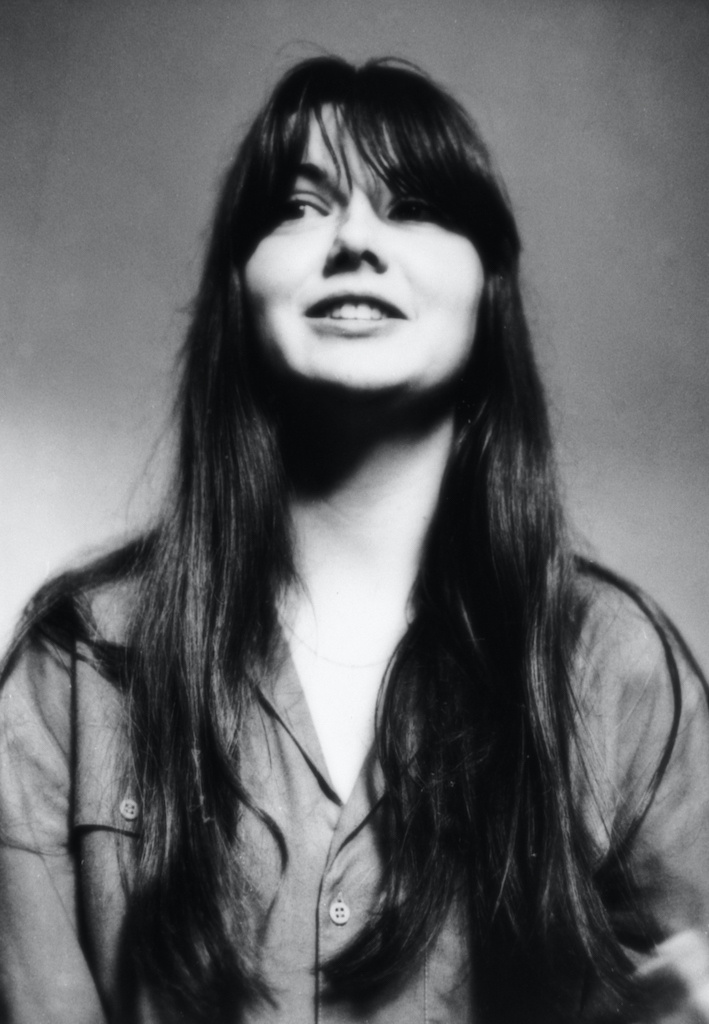
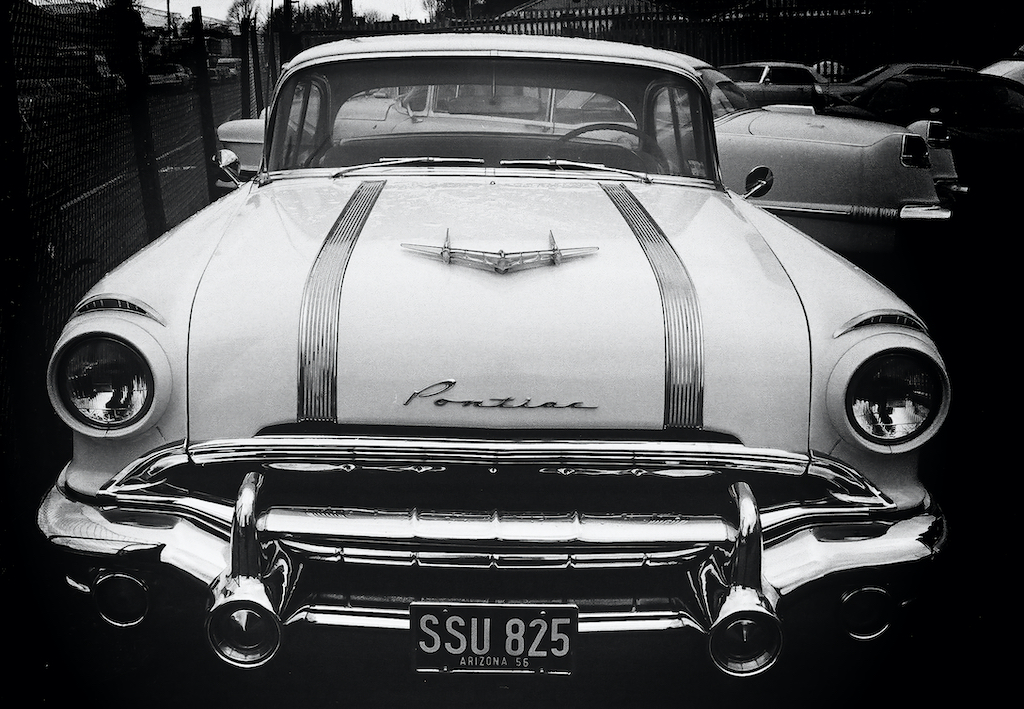
Canon AE-1 Review : The Monster Returns
So why is it so popular? Why are prices sky high? And why do people want to own one now?
I think one word answers this – hype! But there are other reasons too.
People who had little or no exposure to cameras of the Canon AE-1 period have latched onto it. It was produced in vast numbers and the marketing hype of its day has propelled it to semi-mythical status. Look – lots of sports people used it. Mum and Dad had one and new age kid with trendy hair on You Tube has one too!
They were produced in the millions so I suspect it’s as Mark Twain once said of Chicagoans in hell – ‘The trouble with you Chicago people is that you think you are the best people down here, whereas you are merely the most numerous.’
When the whole redux of film started I suspect the AE-1 got a grandstand position. With so many produced it had to be good right?
Well not really because large sales numbers seldom speak of high quality, big sales volumes usually speak of marketing spend and getting the price down. The Fiat Punto is not a better car than a Ferrari because Fiat make more of them!
I think there is also a factor that for some it was probably the first ‘serious’ camera they owned and rather like people paying crazy money for Pentax K1000s out of fond memories for their youth they are into the nostalgia aspect. Those are the people who probably had little experience outside of the AE-1 and possibly still think of it as a professional camera. Some of these folk probably have fond memories of mum and dad owning one or maybe have even found mum and dads one hiding in the attic. Being left in the attic is the fate of many prosumer cameras and the AE-1 being so popular means there are probably millions of them hiding in the weeds.
People often bought an AE-1 for some event, maybe a few holidays but despite Canons best effort to make it simple it was still too much for many. Let’s face it some people can’t get a good shot even with an iPhone and so after a brief foray into creativity and the initial glow of feeling a pro many of them ended up as another regretful purchase and were consigned to the never never land of the attic. Too expensive to chuck in the bin but no use for the here and now. Left in attics and storage chests to re-awaken after 40 years.
For some it will be the camera they couldn’t afford when a kid and now want to own one and of course there will be people who started their serious photography with an AE-1 who now want to go back. I didn’t and I don’t – at least not with an AE-1.
Us oldies are often overcome with a feeling of nostalgia and sometimes things we used to own have a kind of totemic effect in making us feel younger.

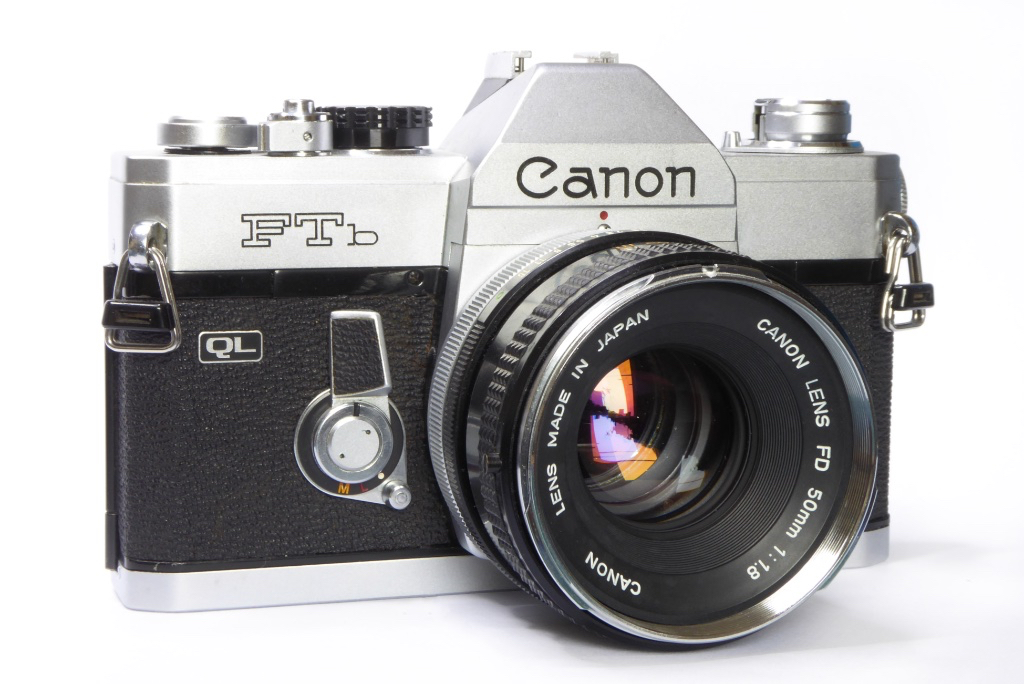
Beyond those reasons I really have no idea why it’s so popular, it’s nowhere near as nice to work with as many cameras of the same period. It’s immediate predecessor the FTb is a beautifully made camera albeit without any automation but these days, even with increasing prices, there are many cameras that are nicer to use than the AE-1 with the same feature sets and many of these truly were professional grade cameras with better handling.
The surprising thing is seeing people recommend it as a beginner camera. Its a very poor tool for a beginner in my opinion unless they are going to just use full auto the whole time. They would be better served by either a fully manual camera like the underrated Pentax KX to learn the craft or else something like the Minolta X-700 which handles a lot better in manual mode. Given the expense of an AE-1 in todays market there are better and less expensive options out there.
Canon AE-1 Review : Monster on Sales Rampage Eats Everything
The AE-1 was historic in many ways, the first SLR to sell a million units, first SLR with shutter priority, first SLR to feature large scale electronics, first one made of plastic and of course it was the camera that turned round Canons fortunes and set them on course to eventually dominate the industry.
The biggest effect though was at a stroke it obsoleted a lot of other cameras and forced the entire industry to follow suite. As I have said in other articles, after the AE-1 almost the entire market moved away from super high quality, technical excellence to a kind of ‘good enough’ mindset. There would still be many fine cameras for the professional but even these would eventually bow down to the God of economics and market share.
Pretty much the entire industry was altered forever and many fine cameras, and even manufacturers, met their demise after the AE-1.
You could make a case for the AE-1 being pretty much the end of the line for Pentax and Olympus neither of whom would create a truly successful antidote for the AE-1. Minolta of course would punch back with the X-700 which played in the same market space as the later AE-1 Program and would actually come close to unseating it from its position as the biggest ever seller. Other manufacturers tried to grab some of this market with their own plastic bodied cameras but none would ever come close to the volumes that the AE-1 and the Minolta X-x00 series would go on to sell.
If the Olympus OM-1 had been a Zeppelin raid on the industry then the AE-1 was carpet bombing it. It would be left to Minolta though to drop the atom bomb when they perfected auto-focus for the masses at a low enough price to kickstart the AF revolution. With that said Minoltas auto-focus marvel owed much to the AE-1 – it too would be a plastic fantastic made from plastic mouldings and silicon chips with an LCD screen thrown in to boot and press button operation – no more mechanical controls, not even a wind on lever!
For Canon, after years of chasing Nikon for the pro market they had finally found the formula for success. Make it cheap enough, market it hard enough, get the sales volumes and be damned to technical excellence.
Canon AE-1 Review : The bottom line..
It’s fair to say the AE-1 was, and still is, one of my least favourite cameras but like Frankensteins monster the AE-1 is somewhat misunderstood – also like Frankenstien’s monster it has no soul.
It never was the professional or even semi-professional camera many these days believe it to have been, in fact it was only barely a prosumer class camera and was primarily designed with low cost front and centre to increase Canon’s market presence by undercutting the competition and creating a cheap camera for the masses.
It’s not a particularly good camera for learning with in my opinion but some of the original marketing hype still surrounds it as the perfect camera for the beginner. Much depends on what you define as a beginner. If you mean someone looking to learn the art of film photography or someone who just wants to snap-shoot? If its the former the AE-1 falls short if its the latter its probably as good as anything else. It was aimed at people with little aspiration or real interest which is why it has, at least in my opinion, an undeserved reputation as the perfect beginner camera today. The subtlety between beginners and the uninterested in learning anything much has been lost over time.
Some of the AE-1 potential buyers and eventual owners would over time buy the Canon A-1 – a serious bit of prosumer hardware for the advanced amateur, some would move on to the premium Canon hardware like the F1 and even if they didn’t the AE-1 established Canon as a major player. It changed Canons fortunes for the better and gave them the solid market share they had lacked.
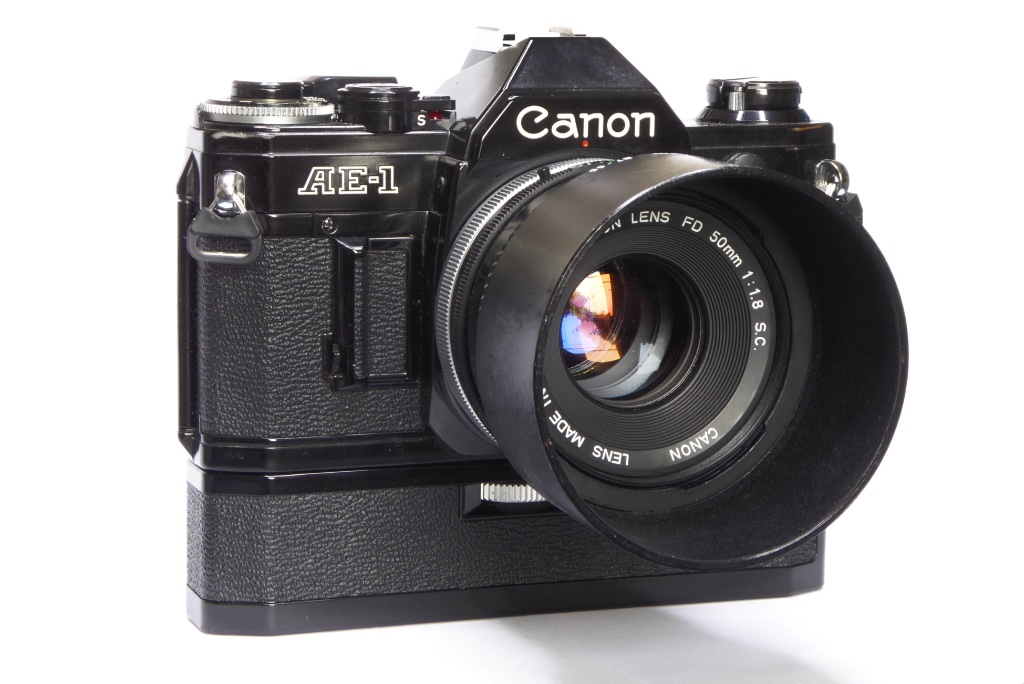
For many the AE-1 would have been their entrée to photography and any camera that can get people sparked up to the photography hobby has to be a good thing of itself almost regardless.
I could never criticise Canons approach. In marketing terms it was in fact genius – it bought them a huge success and if I were running the company it’s the move I hope I would have been smart enough to make. Shift the narrative, look for a new audience, find or make a new market. In Canons case the genius was to stop trying to play the traditional game and find a way to rewrite the rules. It was bold, it was undoubtedly risky but it worked!
With all that that said I am wistful enough to wish that high quality mechanical cameras could have found a niche outside of the rarefied air of Leica and Contax or that Canon could have created a camera with just a bit more soul.
Further Reading
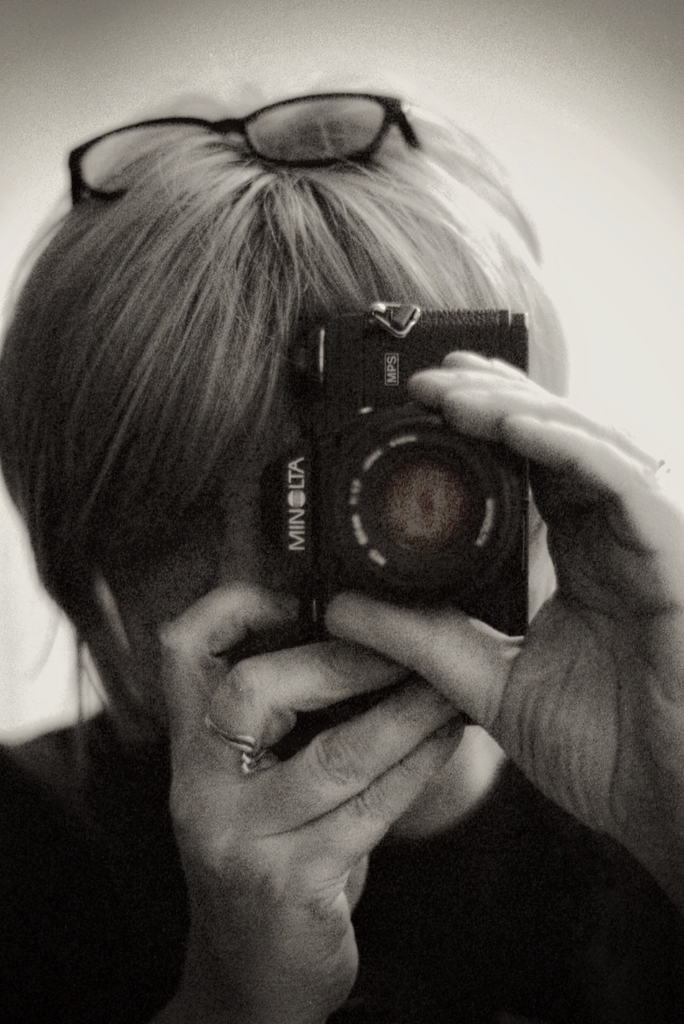
Mel is one of the driving forces behind High 5 Cameras and writes all our articles.
Starting serious photography back in 1972. Over the years she got to shoot film with most of the major brands in 35mm and large format as both a studio photographer and content provider for websites in the early life of the web. These days she is rediscovering photography and has become the GOTO person for knowledge on camera repair advice.


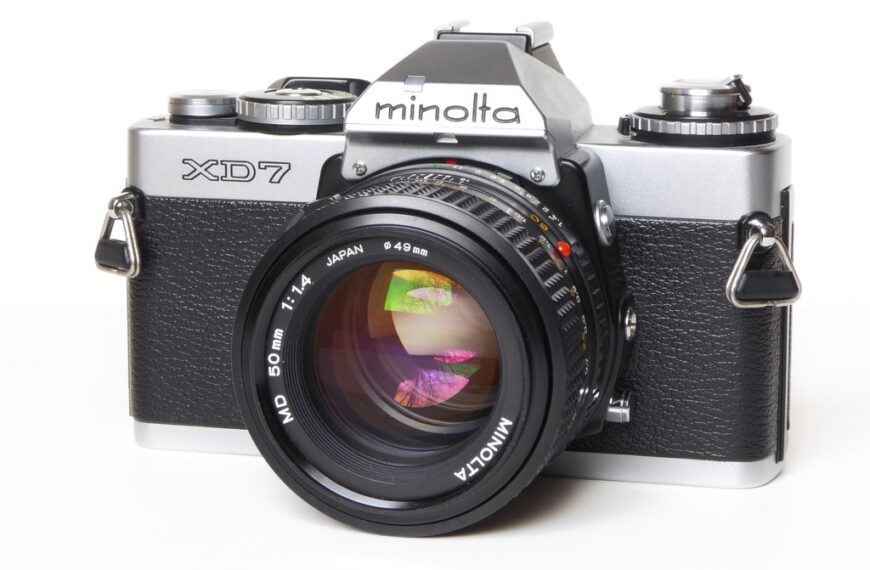
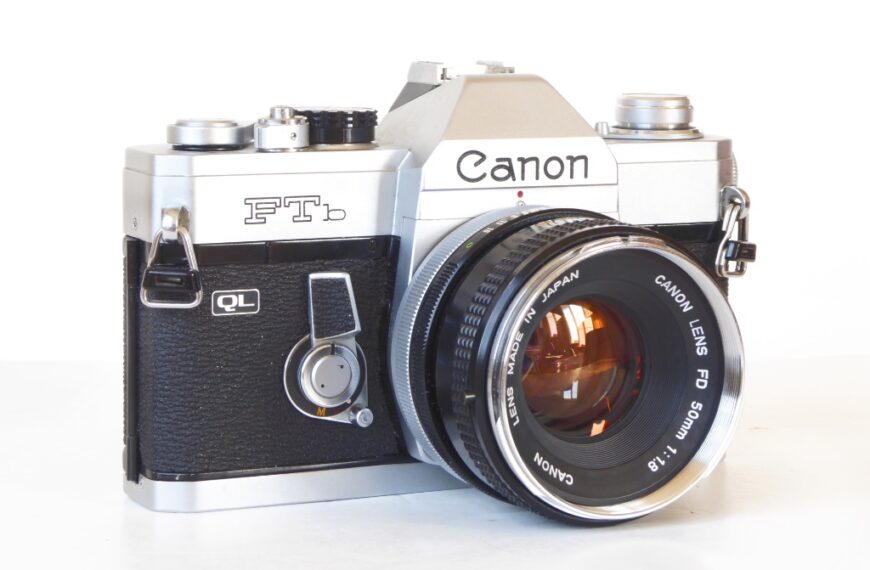
I agree with this assessment. The AE-1 heralded the end of high quality cameras and the Minolta Maxxum finished the job. I previously owned a Canon FT, which was vastly better made than the AE-1 Program that I owned later. Even the A-1 that I bought used had the infamous wheeze problem. I bought the much more expensive T-90, which also developed serious issues after about 10 years. At this point, I moved on to Nikon, which was generally making better quality cameras. My FM2s harken back to the Canon FT in build quality. Even the Nikon FG, which my dad gave me, is a little better made than the AE-1 and uses aperture priority. It is kind of like an AE-1 done right.
We both skipped the T-90 – just didn’t like the look or feel of it. The Nikons were generally of better quality though Nikon withdrew the FG and the EM after problems with them. The best of Nikons prosumers in manual focus was, at least in our opinion, the F-301 which had two program modes, aperture priority and full manual control and one of the best viewfinders out there. Some people think the viewfinder screen was the best Nikon ever made.
For us the Minolta X-700 is an AE-1 done right – its handling is much better and its a very slick piece of kit. We use ours extensively and, although its plastic like an AE-1, it just feels better made.
Many of us I suspect lament the end of the high quality mechanical cameras.
I don’t have an X-700, but I do have an X-570, and it’s a wonderful little camera! I grew up with a Pentax ME Super, and frankly that camera ran circles around the AE-1 in terms of functionality and build quality (hello, vertical traveling 1/2000th sec. Seiko shutter). About the only thing the AE-1 had that it lacked was depth of field preview. The derrivative Super Program and Program Plus are also very solid.
A camera that is aimed at the same market as the AE-1 which doesn’t get enough respect, IMO is the Olympus OM40/OMPC. It featured more substantial, higher grade fittings than the preceding double digit OM’s, off the film plane metering, TTL flash, and a basic form of matrix metering. Though it’s mostly plastic like the AE-1, like the Minolta X series it feels very solid.
I kind of like the ME Super – Mel is lukewarm to it. I was mostly an enthusiastic amateur while Mel was a pro. Neither of us ever used the double digit OMs. Certainly the ME Super was built to a better quality but as you may know they suffer problems with age which are quite hard to fix. We have three here which all need major works to get them back to fully running.
Re: “heralded the end of high quality cameras”
Well, it depends. Minolta would eventually come up with the Dynax 9, a formidable beast if ever there was one. Nobody would ever accuse the Nikon F3, F4, or F5 of being lightweights. Even the N8008 and N90s, though shrouded in poly carbonate, were more than up to whatever rigors most pros could throw at them.
Well it depends on how you see high quality. Pre- the arrival of the AE-1 it meant solid metal, crafted and hand assembled items. Post the AE-1 the world turned to plastic and electronics and generally a turn towards ‘good enough’ even at the pro level. Almsot everything after the AE-1 became a race towards lowest cost possible and the ethos of quality was, at least in our opinion, lost. Even Nikon would be dragged into the plastic pit of doom.
The electronics for sure allowed camera manufacturers to go further for less but at the cost of long term durability.
F3s are often a liability these days thanks to their electronics. F4s similarly and if your unlucky enough to have a Dynax fail on you then its pretty much game over.
Mel will tell you about how her Pro grade EoS from the first generation broke down repeatedly, changed for another one which carried on breaking down and the OM4Ti which failed repeatedly. These were ‘quality’ bits of kit but somewhere the raw reliability that came as standard with the generation of cameras earlier was lost.
Yes earlier cameras than teh AE-1 can have their issues – Minolta SRTs are full of foam that degrades, the Nikon F can suffer failure of its meter cells etc but the cameras are basically tough, durable and were built with a kind of quality is kind approach.
A great read! I have a soft spot for the AE-1, being my first film camera purchase (at a bargain!) with a no-name 28mm and Vivitar zoom, and used it extensively for holidays and events. I’ve since passed on that AE-1 to a relative as a starter camera, now using an A-1 and FTb with better lenses, but my skills were learned on that simple AE-1 kit
Well me and Mel were never keen on the AE-1 – Mel absolutely hates them with a passion but tempered her judgement for the article. As she said she felt she should be more mild and give a more balanced view. It was my first camera too and it did give me a start in photography so, rather like your experience for me it served its purpose. We have an article on the FTb on the site you may enjoy reading.
Best regards,
Claire
Wonderful write-up. You can’t underestimate the role the newfound spending power and consumerist attitudes amongst baby boomers played in making these cameras such a success. By 1976 most of the baby boomers had abandoned the late-60s/early-70s hippy ethos (to the extent they ever really embraced it to begin with), and had run head long into the arms of consumerism. They represented the greatest mass of disposable income (with a willingness to freely dispose of it) the world had ever seen. However, they sought to differentiate their consumption from that of their parents by styling themselves as literate, tasteful consumers.
Their parents had lusted after gas guzzling, chrome laden land yachts, bought American made televisions and hi-fi sets in giant wooden cases meant to look like “good furniture,” and drank beer that came six packs of cans. They, on the other hand, drove Japanese and European cars (Japanese for economy and reliability, German for luxury, and Volvos for those into safety), created “entertainment centers” composed of the highest tech, brushed steel encased components from Japanese and European electronics manufacturers, and drank wine from France and Northern California.
For this type of buyer, an SLR was as much a status symbol as anything else. Let Joe and Jane six pack content themselves with their Kodak Instamatics and Polaroid swingers. You showed up at Billy’s school pageant with a Japanese SLR (likely bearing an optically mediocre but phallically long zoom lens from a 3rd party manufacturer purchased at Sears or JC Penny), you were telling your neighbors you were hip, man! You might look like another suburban drone, but you led a secret life of intrigue and sophistication. Maybe next weekend you were going to your beach house in the Hamptons or perhaps on Safari in Africa.
A couple of other stray thoughts:
Initially, shutter priority was actually the easier system to implement. Konica had managed to do it mostly mechanically with their Autoreflex in 1965. Canon’s first automatic exposure SLR, the EF, was primarily shutter priority as well. So with the AE-1 and the goal of cutting costs down, it was most likely a case of “go with what you know.”
The top speed of 1/1000th sec. is due to the cloth focal plane shutter (cost cutting again). Olympus managed to squeeze 1/2000th sec. out of such a shutter for their pro level OM-3 & OM-4 in 1983, but by and large 1/1000th sec. was the upper limit for that technology.
Also, Olympus did in fact create its very own AE-1 competitor, the OM10. In a great bit of counter-programming, Olympus met Canon’s jocks with a series of television and print ads featuring supermodel Cheryl Tiegs. Though the fit and finish of the OM10 make the AE-1 look like a Leica product, the marketing campaign worked and the camera was a big seller.
Mel is an Olympus fan girl at times – she oscillates depending on the day of the week, the weather and moon phases between Nikon, Olympus and Minolta. Occasionally when it’s a blue moon in August she will wax lyrical and get misty eyed over Pentax. She has even been known to get the odd faraway look over a Canon FTb.
Minolta also used sports personalities. Thats probably why Minolta and Canon had a struggle with the lack of pros when Olympus were pitching David Bailey and various super pros using the OM-1 and its progeny.
My own travels with cameras of my own started with i think Halina? Small silver/chromed thing that you peered through a hole/Aperture to one side at top part of it.
Stuffed film in back and set ASA. Then the trickery started! you selected shutter speed you thought right for what you desired? Set Aperture to match! then focussed it by looking at distance and ???? but as it was a short rearended lens was at max mostly.
Had some great pictures with it no electrics either!.
Then moved on to a Ricoh KR10 that was great loved the meter read out as could balance +/- with needles without using any controls(Not many to use on it anyway)
Pretty solid unit and had plenty of good pictures from it but in the end sold it with a few lenses with bits due to next Camera!
Got a Canon T90 with the 300TL flash gun enjoyed many of the things it could do like double exposures/2nd curtain sync with flash and immense shutter options as did a lot of long exposures with evening/night time shots often around London like Tower Bridge.
Also used for lots of Motorsports inc panned shots and even did a panned shot with a Tamron 500 F8 mirror lens across the circuit at Brands Hatch plus head on at close’ish range and much more also did Aircraft flying like spitfires plus fly pasts as that comes right by me!.
I mostly select shutter but watch what Aperture it say’s then adjust to what speeds/depth i require? Plus i got the “rare” side button for vertical release.
Must admit pretty happy with them apart from the old needle type play in view finder as the aperture readout isn’t that great when looking in and out quickly dealing with esp fast moving targets but manageable i guess?
Left photography for many years as too many other things going on but often felt an urge but most are on digital autofocus that i know so bit left out plus my kit got stolen from flat when had kitchen monkeys replacing kitchen and bathroom which included Canon 300mm F4L lens.
But lately been on a B&W course run at Four Corners Studio where we go point camera at things then head to lab and print our creations learning about not only printing but also getting enough exposure so film has depth.
So picked up two T90’s one totally mint! and bundle of parts inc Lenses.filters etc plus 300TL flash gun and still have my Manfrotto 055b tripod with 029 head bit heavy but stable and got some decent pics out so far.
Nearly bought an Eos1rs instead, but maybe find a decent EOS type 35mm camera and get a digital Camera so have lenses that fit both so have options?
Was a few Nikon FM2’s and FA’s came up some new in boxes when looking for camera few went for really good prices.
Do like the look of Olympus cameras have used but never owned.
But like with Cordless powertools once into a system (Batteries/chargers)it’s a big spend/commitment to get another set of lenses.
Collecting cameras is an expensive and sometimes stressed out business. Part of the problem is many of these cameras are now old and few have ever been serviced well which makes the secondhand market a minefield.
The OM-1 is extremely nice to shoot with but you really need a good one. Almost any tech can service them but there are a lot of dodgy ones in the market.
As ever with any SLR the real cost is the lens. We use a lot of Tamron Adaptalls because when you are trying to support 10 different mount formats its gets a bit expensive to have dedicated lenses for all cameras.
Processing is an art unto itself really – Mel and I both used to do our own processing but if we are honest we were only competent not expert. There are so many factors in processing that can affect the final image, the developers and papers can be bewildering and few people get the chance to use a wide variety.
Mel always regales people of the story of taking a course run by a hoary old press packers whose standard approach to students was to hand them a box Brownie with 12 shots in it and tell them not to come back until they had 12 good shots. Deprived of any tech it forced the student to look hard for pictures. Fixed focus, 1/60th shutter speed (pretty much rules out anything moving faster than a snail) and of course no control of depth of field. It tests the mettle.
Just aim to have fun is our motto.
I was about 16 and both the AE1 and XG-M were in the local camera shop as I walked home from school. I saved and saved. After some deliberation I decided the XGM was my future and bought it. I quite liked the XG-M, but not sure I ever loved it. I always thought that I had made a mistake and should have chosen the AE1. So, as I have got older and returned to film, as people do I have been collecting the cameras from my youth. I bought a mint AE1.
It was horrific. Whilst the XG-M was chromed plastic, the AE1 was worse. I sold it on again in a trice. Then collecting cameras that I had either owned, or dreamed of began. Obviously OM1 and OM2, MX, ME-Super (surprisingly handy), SRT101, XDs (Japanese market XD-7 with diopter dial instead of viewfinder blind), A1, XGM, and every Contax from RTS onwards… with a mad respect for the AX. I do use them, but prefer 6×4.5, so they mainly form a museum nowadays. In some cases I had to buy several of a camera to make one mint one (looking at you RTS).
But the overriding memory of the AE1 is not that it was the one that got away, but that it was a lucky escape. Shutter priority is just a waste of time.
Well the XG-M is a very sweet camera which I find handles nicer than the AE-1. I actually did have an AE-1 back in the day and I confess I really didn’t like it at all. Like you I started collecting to reshoot all the cameras I owned over the years. I have had to drawa line under the Bronicas as the prices are mad and the difficulty of finding good repair techs.
I have used almost all the cameras you mention at various times and over time I will be reviewing each of them for the High5cameras site so keep a look out.
Glad you got to try the AE-1 at last but sorry it was a disappointment.
Many thanks for your generous coffee donation.
Best regards,
Mel
I had the FTb then got the AE-1. Still have both. I loved the AE-1 and got most amazing photos across the USA and Europe.
My AE-1 still works just fine and is a dream to use. I currently use the R7 mostly but the AE-1 still is used.
Great camera, NO regret.